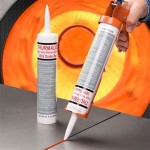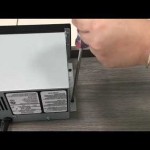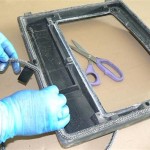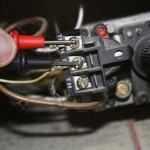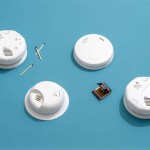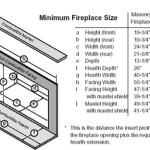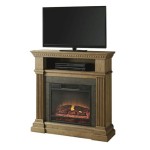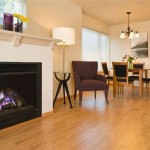How to Safely Use a Wood Burning Fireplace
Wood-burning fireplaces offer a cozy and inviting ambiance, but they also present potential safety risks. When used improperly, they can lead to fires, carbon monoxide poisoning, and other dangers. By following safety guidelines, you can enjoy the warmth and charm of your fireplace without jeopardizing your health or property. This article provides a comprehensive guide on safe fireplace use.
Choosing the Right Wood
The type of wood you burn significantly affects your fireplace's efficiency and safety. Hardwoods like oak, maple, and hickory burn hotter and longer, producing less smoke and creosote. Softwoods like pine and fir ignite easily, but they burn quickly and produce more creosote. Avoid using treated woods, painted or varnished wood, or plywood, as they release harmful fumes.
When selecting wood, ensure it is dry and seasoned. Seasoned wood has a moisture content of less than 20%, allowing it to burn efficiently and produce less smoke. Freshly cut wood will burn poorly and can lead to excessive creosote buildup.
Fireplace Maintenance
Regular maintenance is crucial for ensuring your fireplace's safe and efficient operation.
Cleaning the Fireplace
Creosote, a highly flammable substance, accumulates in your chimney and fireplace over time. This buildup can ignite, causing a chimney fire. Clean your fireplace regularly to prevent this.
Hire a professional chimney sweep at least once a year to inspect and clean your chimney. They can also check for cracks or other structural damage. If you see any signs of creosote buildup, clean your fireplace more frequently.
Inspecting the Chimney
Regularly inspect your chimney's condition for cracks, gaps, or blockages. These issues can lead to smoke and carbon monoxide leaks, posing a serious risk to your health. Consult a professional if you notice any problems.
Storing Firewood
Store firewood properly to ensure it is dry and safe. Stack firewood off the ground and away from your home to prevent moisture buildup and pest infestations. Avoid storing firewood near your fireplace or other heat sources.
Using the Fireplace Safely
Follow these safety tips when using your fireplace:
Never Leave a Fire Unattended
Always supervise your fireplace when it is in use. Never leave flames unattended, even for a short period.
Use a Fire Screen
A fire screen prevents sparks and embers from escaping the fireplace and causing a fire. Install a sturdy screen that extends beyond the hearth on all sides.
Keep Flammable Materials Away
Ensure that flammable materials like curtains, furniture, and rugs are kept at a safe distance from the fireplace.
Use a Sturdy Fire Tool Set
Use a durable fire tool set to add fuel, stir the fire, and remove ashes safely. Do not use anything that could be flammable or could compromise your safety.
Never Burn Trash or Hazardous Materials
Only burn dry firewood in your fireplace. Avoid burning plastic, paper, trash, or other hazardous materials, as they release toxic fumes and can cause a fire.
Use a Fireplace Insert
Consider using a fireplace insert for greater efficiency and safety. Fireplace inserts are metal units that are placed within the fireplace and create a more controlled fire. They can reduce heat loss, improve efficiency, and provide a more even heat distribution.
Never Leave a Fireplace Door Open
The door to the fireplace should be closed whenever the fireplace is not in use. This prevents drafts from blowing embers into the house and helps maintain a safer environment.
Install Carbon Monoxide Detectors
Install carbon monoxide detectors in your home, especially near the fireplace. Carbon monoxide is a colorless and odorless gas that can be deadly. Detecting carbon monoxide early can save lives.
Be Mindful of Children and Pets
Keep children and pets away from the fireplace and hot ashes. Always supervise them when they are around the fireplace area.
Extinguish the Fire Properly
When you are done using your fireplace, make sure to extinguish the fire completely. Never leave hot embers or coals unattended. Use a poker or tongs to move the embers to the front of the fireplace, and then use water to extinguish the fire completely.
Keep a Fire Extinguisher Handy
Keep a fire extinguisher readily available in case of a fire emergency. Ensure everyone in your household knows how to use it properly.
By following these guidelines and exercising caution, you can safely enjoy the warmth and beauty of your wood-burning fireplace for many years to come. Remember, safety is paramount, and responsible fireplace use is essential.

Five Easy Steps On How To Properly Use A Fireplace

How To Use A Fireplace Bob Vila

How To Use A Wood Stove 15 Steps With S Wikihow

How To Use A Wood Burning Stove
How To Start A Fireplace Fire Guide Allstate

How To Properly Burn Wood In A Fireplace Stove Experts

How To Safely Use Your Wood Burning Fireplace This Winter Economical Insurance

5 Wood Stove Safety Tips Doctor Flue Mi Oh

Why Shouldn T I Burn Anything Beside Wood In My Woodstove

10 Tips For Maintaining A Wood Burning Fireplace
Related Posts

